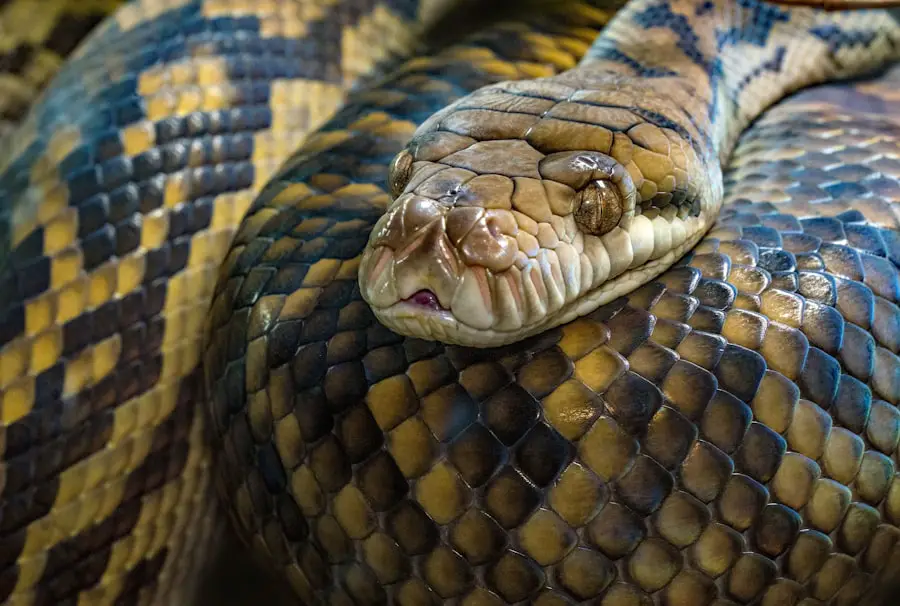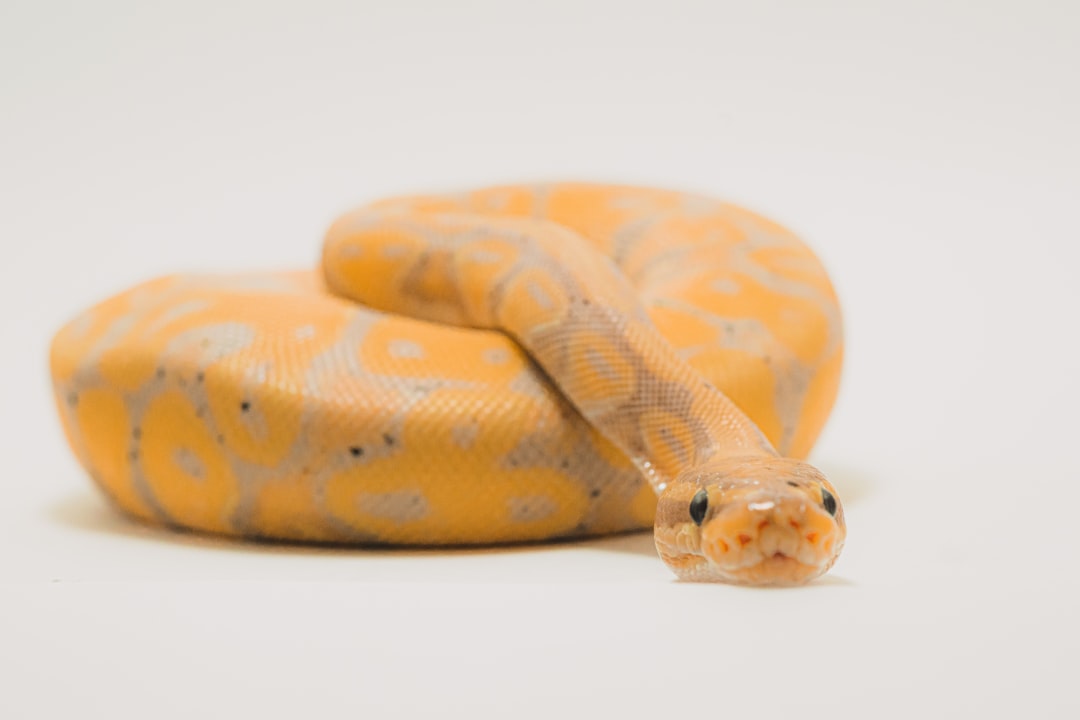Snakes, as members of the suborder Serpentes, exhibit a fascinating array of behaviors that are often misunderstood due to their secretive nature and the myths surrounding them. These reptiles have evolved over millions of years, adapting their behaviors to survive in diverse environments ranging from arid deserts to lush rainforests. Understanding snake behavior is crucial not only for herpetologists but also for conservationists and the general public, as it sheds light on their ecological roles and the challenges they face in a rapidly changing world.
The behavior of snakes is primarily driven by their need for survival, which encompasses feeding, reproduction, and thermoregulation. Unlike mammals, snakes do not have limbs, which significantly influences their movement patterns and interactions with the environment. Their unique mode of locomotion, which includes lateral undulation, rectilinear movement, and concertina motion, allows them to navigate through various terrains.
Additionally, snakes exhibit a range of social behaviors, from solitary living to complex mating rituals, which further enrich our understanding of their ecological niches.
Key Takeaways
- Snakes exhibit a variety of behaviors influenced by factors such as temperature, food availability, and reproductive needs.
- Factors affecting snake movement include habitat type, prey availability, and seasonal changes.
- Snakes typically move short distances daily to find food, water, and suitable shelter.
- Some snake species are capable of long-distance travel for purposes such as mating, hibernation, or finding new habitats.
- Examples of snake migration include the mass movement of red-sided garter snakes and the migration of timber rattlesnakes.
Factors Affecting Snake Movement
Temperature and Shelter
Many snake species are ectothermic, meaning they rely on external heat sources to regulate their body temperature. Consequently, during cooler months or at night, snakes may become less active and restrict their movements to basking in the sun or seeking warmth in sheltered areas.
Food Availability
Another significant factor is the availability of prey. Snakes are opportunistic feeders, and their movement patterns often align with the abundance of food sources. For example, a rattlesnake may traverse a larger area during the breeding season when it is actively seeking mates or when prey is plentiful.
Human Impact on Snake Movement
Conversely, during periods of scarcity, snakes may remain in a smaller territory to conserve energy. Additionally, human activities such as urbanization and agriculture can disrupt natural habitats, forcing snakes to adapt their movement patterns in search of food and shelter.
Typical Daily Movement of Snakes

The daily movement patterns of snakes can vary widely among species and are influenced by factors such as habitat type and seasonal changes. In general, many snakes are crepuscular or nocturnal, meaning they are most active during dawn and dusk or at night. This behavior helps them avoid predators and reduces water loss in arid environments.
For instance, the Eastern Diamondback Rattlesnake often hunts during the cooler hours of the day when its prey is also more active. In contrast, some species may exhibit diurnal behavior, particularly in cooler climates where daytime temperatures are more favorable for activity. The Gopher Snake is an example of a diurnal species that can be seen basking in the sun during the day while actively hunting for small mammals.
The daily movement of snakes is also influenced by their life stage; juvenile snakes may have different movement patterns compared to adults as they seek to establish territories and learn hunting techniques.
Long-Distance Travel by Snakes
| Snake Species | Distance Traveled (miles) | Time Taken (days) |
|---|---|---|
| Black Mamba | 5 | 1 |
| Reticulated Python | 20 | 3 |
| King Cobra | 10 | 2 |
While many snakes exhibit localized movement patterns, some species are known for their remarkable long-distance travel capabilities. This behavior is often linked to seasonal changes, breeding cycles, or environmental pressures such as habitat destruction or climate change. For example, certain species of sea turtles are known to migrate thousands of miles between feeding and nesting grounds; similarly, some snake species undertake significant migrations in search of suitable habitats or mates.
The Eastern Indigo Snake is one such species that has been documented traveling considerable distances during its annual migration. Research has shown that these snakes can cover several kilometers in a single day as they move between seasonal habitats. This long-distance travel is not only essential for their reproductive success but also plays a critical role in maintaining genetic diversity within populations.
Examples of Snake Migration
Migration in snakes is not as widely recognized as it is in birds or mammals; however, several species exhibit migratory behaviors that are crucial for their survival. The Western Terrestrial Garter Snake is known for its seasonal migrations between summer feeding grounds and winter hibernacula. These migrations can span several kilometers and are often influenced by temperature changes and the availability of prey.
Another notable example is the Black Rat Snake, which has been observed migrating to find suitable nesting sites during the breeding season. These migrations can be triggered by environmental cues such as temperature fluctuations or changes in daylight hours. Understanding these migratory patterns is essential for conservation efforts, as it highlights the need for protecting critical habitats along migration routes.
Tracking Snake Movement

Advancements in technology have significantly enhanced our ability to track snake movement and behavior in the wild. Researchers employ various methods such as radio telemetry, GPS tracking, and even accelerometers to gather data on snake movements over time. Radio telemetry involves attaching a small transmitter to a snake, allowing researchers to monitor its location and movements remotely.
This method has provided invaluable insights into the home ranges and migratory patterns of various snake species. GPS tracking has revolutionized wildlife research by enabling scientists to collect precise location data at regular intervals. For instance, studies on the Timber Rattlesnake have utilized GPS collars to track individual movements across different seasons.
This data not only helps researchers understand habitat use but also informs conservation strategies by identifying critical areas that require protection.
Implications for Snake Conservation
Understanding snake movement patterns has significant implications for conservation efforts aimed at protecting these often-misunderstood reptiles. As human activities continue to encroach upon natural habitats, it becomes increasingly important to identify key areas that support snake populations throughout their life cycles. By recognizing migration routes and seasonal habitats, conservationists can advocate for the establishment of protected areas that facilitate safe passage for snakes.
Moreover, knowledge of snake behavior can aid in mitigating human-snake conflicts. For example, educating communities about the ecological roles of snakes can foster coexistence rather than fear-driven responses that often lead to persecution. Conservation programs that emphasize habitat preservation and restoration can help ensure that snakes have access to the resources they need for survival.
Conclusion and Future Research
The study of snake behavior and movement is an evolving field that holds great promise for enhancing our understanding of these reptiles and their ecological roles. As research continues to uncover the complexities of snake migration and daily movements, it becomes increasingly clear that these behaviors are intricately linked to environmental health and biodiversity. Future research should focus on long-term monitoring of snake populations across various ecosystems to assess the impacts of climate change and habitat loss on their movement patterns.
Additionally, integrating traditional ecological knowledge with scientific research can provide a more holistic understanding of snake behavior within local contexts. Engaging communities in conservation efforts will be vital for fostering positive attitudes toward snakes and ensuring their protection for generations to come. As we deepen our understanding of these remarkable creatures, we pave the way for more effective conservation strategies that benefit both snakes and the ecosystems they inhabit.
If you’re planning a hiking trip to observe snakes in their natural habitat and wondering how far they travel in a day, you may also be interested in checking out this article on the best hiking backpack for multi-day trek. Having a reliable and comfortable backpack can make your snake-watching adventure more enjoyable and convenient.
FAQs
How far do snakes travel in a day?
Snakes can travel varying distances in a day depending on factors such as species, habitat, and availability of food. Some snakes may only travel a few meters, while others can cover several miles in a day.
What factors influence how far snakes travel in a day?
Factors that influence how far snakes travel in a day include their species, size, age, reproductive status, availability of prey, temperature, and habitat type. Some snakes may be more active and cover greater distances during certain times of the year or in search of a mate.
Do all snake species travel the same distance in a day?
No, different snake species have different movement patterns and travel distances. Some species are more sedentary and may not travel far from their preferred habitat, while others are more mobile and may cover larger distances in search of food or suitable breeding sites.
What is the average distance a snake travels in a day?
There is no single average distance that applies to all snakes, as their movement patterns can vary widely. Some snakes may only move a few meters in a day, while others may travel several miles in search of food, water, or suitable habitat.
How do snakes navigate during their travels?
Snakes use a variety of methods to navigate during their travels, including their sense of smell, vision, and the ability to detect vibrations and heat. Some species are also known to use landmarks and environmental cues to orient themselves as they move through their habitat.

1 thought on “How Far Do Snakes Travel in a Day?”